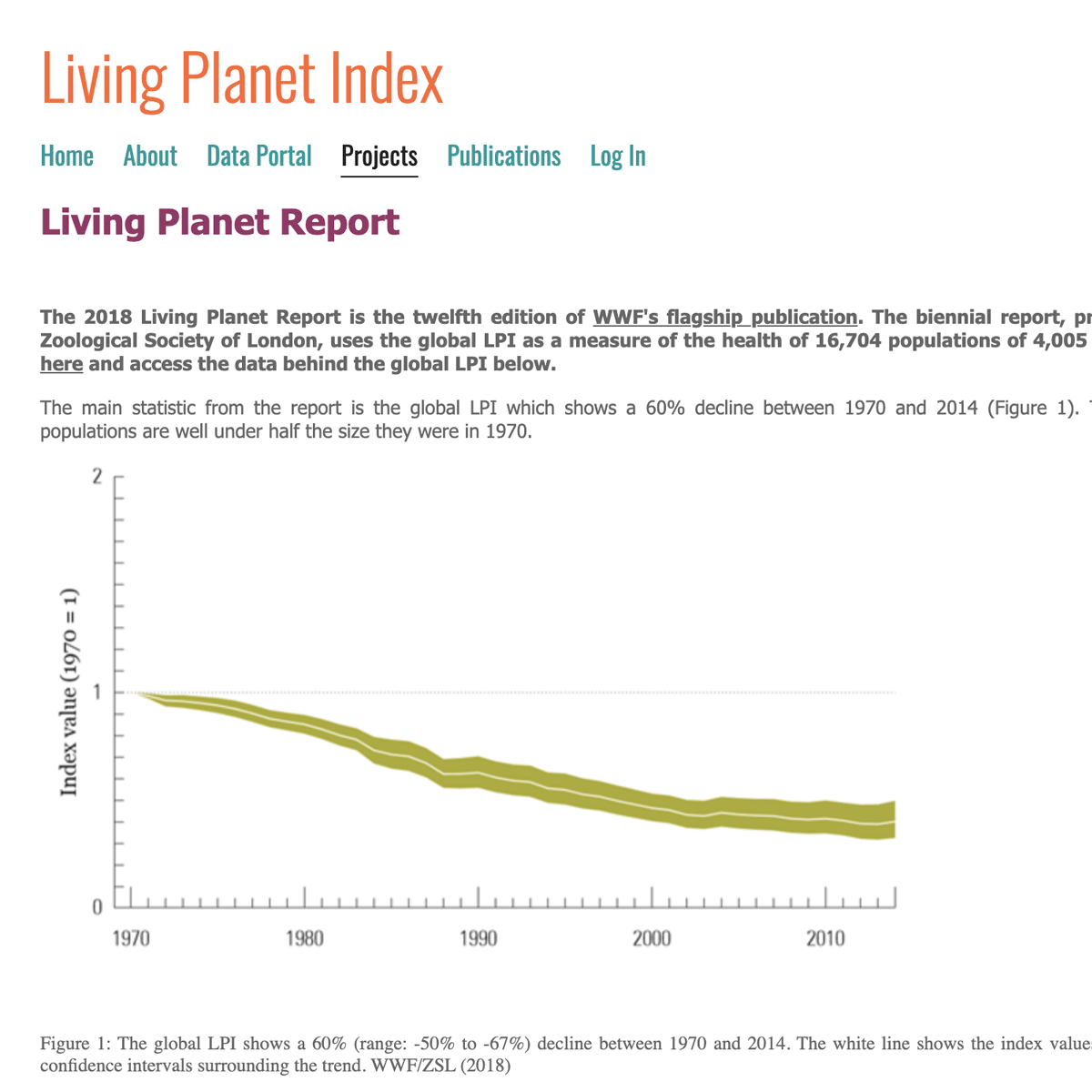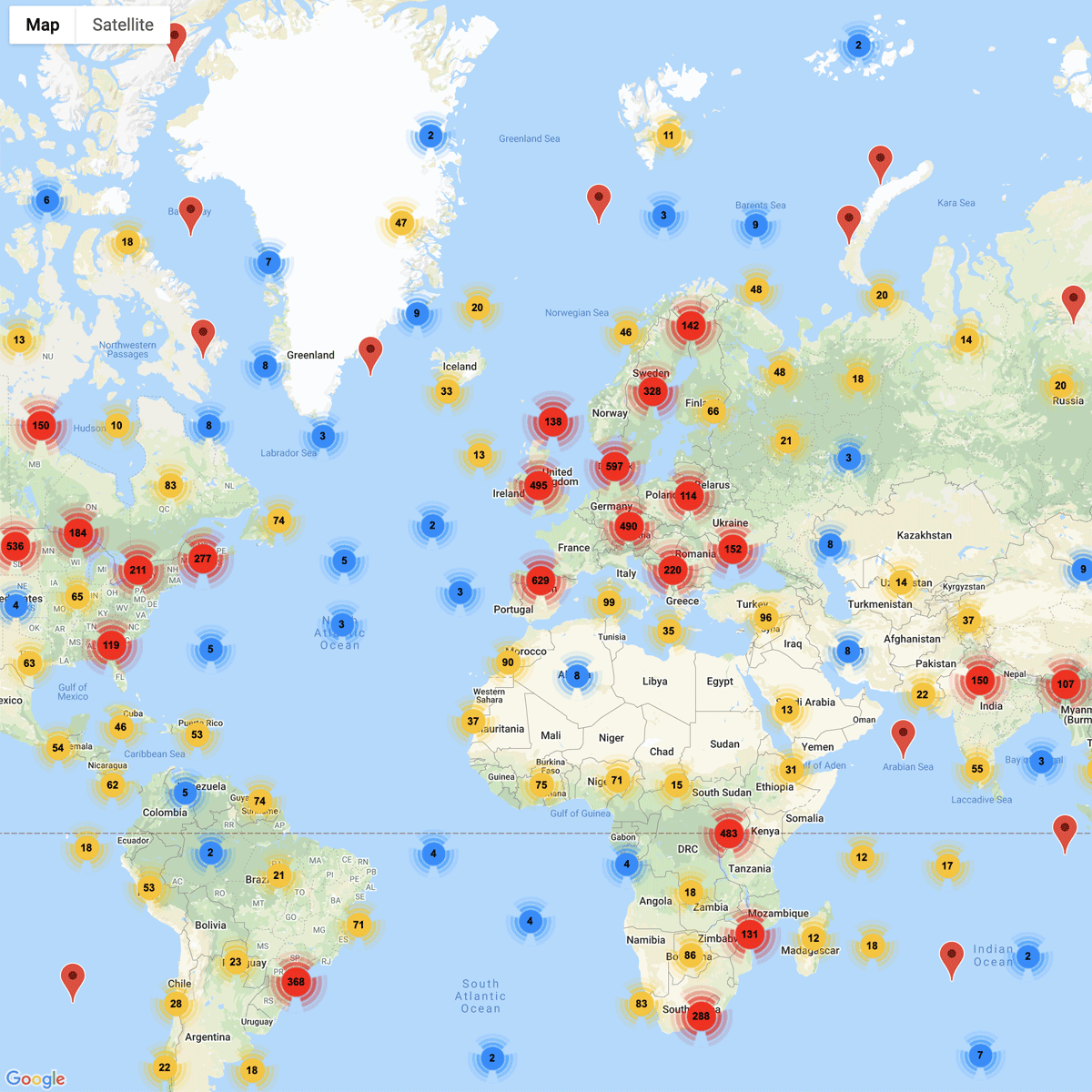


The Living Planet Index (LPI) is a measure of the state of the world's biological diversity based on population trends of vertebrate species from terrestrial, freshwater and marine habitats. The LPI has been adopted by the Convention of Biological Diversity (CBD) as an indicator of progress towards its 2011-2020 target to 'take effective and urgent ...
DOI: 10.1670/17-076
DOI: 10.1098/rstb.2017.0017
DOI: 10.1111/conl.12434
Last Update: 2018
Data analysis Data reporting Species populations Terrestrial Freshwater Marine Mammals Reptiles Butterflies Other Invertebrates Birds Fishes Amphibians Macroinvertebrates
Login to add the tool into your favorites.
The Living Planet Index (LPI) is a measure of the state of the world's biological diversity based on population trends of vertebrate species from terrestrial, freshwater and marine habitats. The LPI has been adopted by the Convention of Biological Diversity (CBD) as an indicator of progress towards its 2011-2020 target to 'take effective and urgent action to halt the loss of biodiversity'. The LPI measures biodiversity by gathering population data of various vertebrate species and calculating an average change in abundance over time. The LPI can be compared to the stock market index, except that, instead of monitoring the global economy, the LPI is an important indicator of the planet’s ecological condition (Collen et al., 2009). The global LPI is based on scientific data from 14,152 monitored populations of 3,706 vertebrate species (mammals, birds, fishes, amphibians, reptiles) from around the world.
| Contact person: | Louise McRae |
|---|---|
| Contact e-mail: | louise.mcrae@ioz.ac.uk |
| Contact Organization: | Zoological Society of London |
| License: | http://www.livingplanetindex.org/documents/data_agreement.pdf |
| Technical Status: | Finish and with constant technical support |
| URL(s): |
http://www.livingplanetindex.org/home/index
http://www.livingplanetindex.org/data_portal |
Login to add a review for the tool The Living Planet Index (LPI)